As you already know, my great-grandfather was a man of many trades.
Throughout his childhood, he was particularly fond of classical literature and had read hundreds of books by the likes of Victor Hugo (Les Misérables), Emile Zola (Nana), Alexandre Dumas (The man in the Iron Mask), Jules Verne (Around the world in 80 Days) and so on...
When he reached retirement age, while devoting much of his time to the art of painting, he had the idea to illustrate a book he adored and had read at least a hundred times: "The Three Tales" (Les Trois Contes) by Gustave Flaubert.
The small book found in my mom's collection | Les Trois Contes - The Three Tales |
|---|
Georges Sand (a famous French writer) had said to Flaubert: "You bring more sadness to the people who read you."
Was this the phrase, which my great-grandfather knew, that made him give a more joyful note to these "Three Tales"? It's quite probable.
Here are some of the illustrations I found inside the book:
A simple heart
This is the story of a poor, devoted country girl. She loves the people she works for, but also an old man she cares for, a nephew and her parrot.
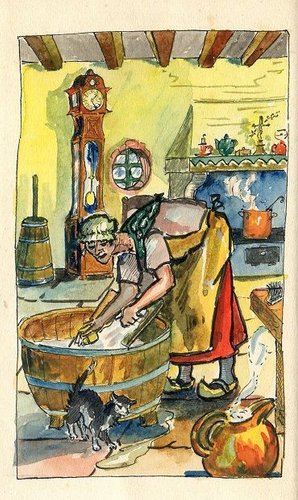 The maid washing | 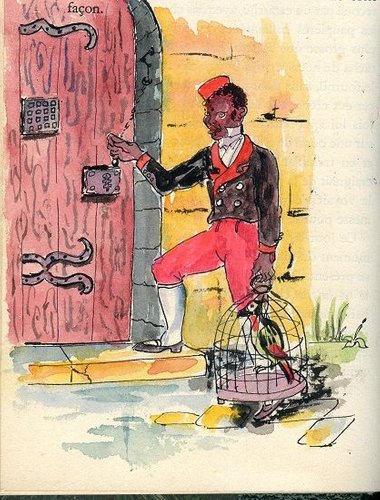 The servant arriving at the house with a parrot |
|---|
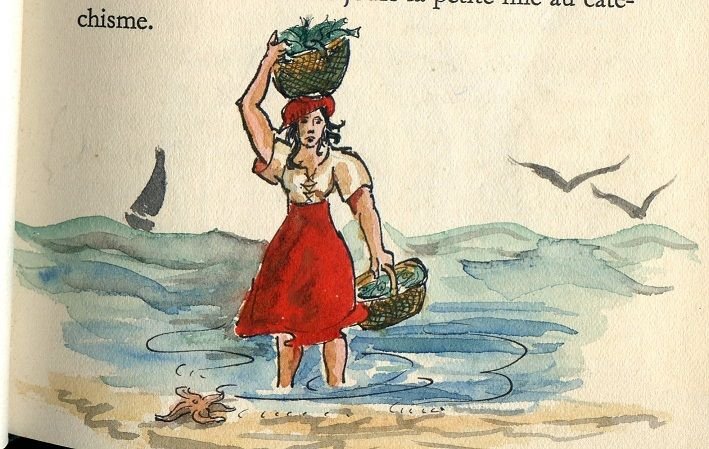
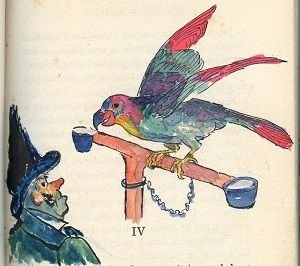
This book took Gustave Flaubert nearly 30 years to write - he died only 3 years after its publication in 1877.
The Legend of St Julien l'Hospitalier
This story takes place in medieval times. Julien had a passion for hunting. During one of his outings, a deer tells him that one day he will kill his father and his mother. He tries, in vain, to flee this prediction. Realizing his crime he becomes a beggar and lives the rest of his life in poverty.
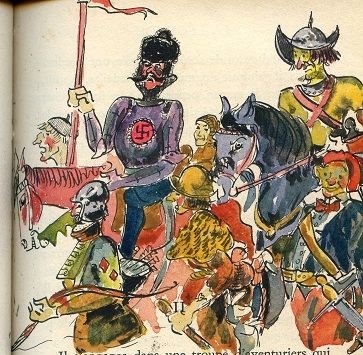 St Julien l'Hospitalier in an army of adventurers | 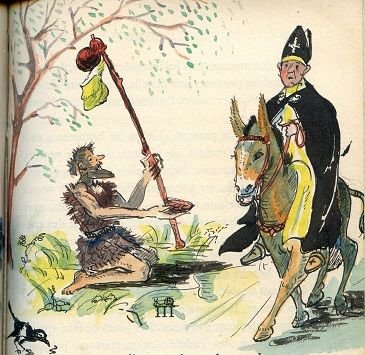 St Julien l'Hospitalier begging |
|---|
Herodias
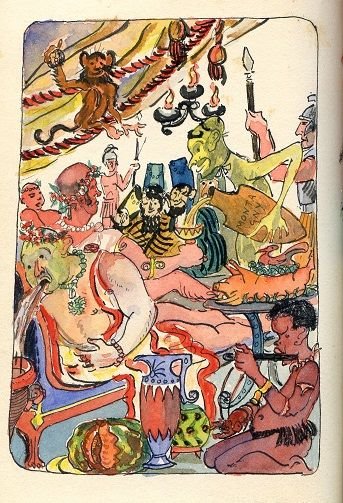
This is the story of Herod Antipas who, in ancient times, wanted to marry one of his nieces but Laocanann is opposed to this incestuous relationship.
The watercolor seen here is an illustration of the Great feast of the Chiefs.
If you look closely, you will notice a Roman regurgitating his meal and another being served wine by a slave.
Funny little detail difficult to notice: on the jug is written the word Montagny, a village not far from my great-grandfather's, famous for its wine (but has nothing to do with the story of Herodias ... a priori! )
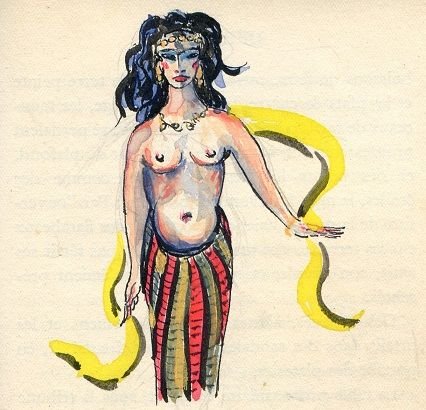 A slave | 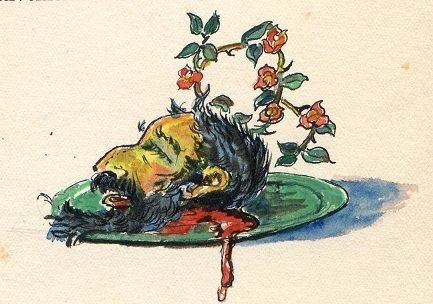 Head of Laocanann served on a plate |
|---|
These paintings, have all been meticulously executed within the very few white spaces left in the book.
His attention to detail helps us immerse into the atmosphere of the story and bring life to its numerous characters.
The use of bright colors provide a touch of cheerfulness to these three tales which earned Flaubert a shower of praise upon its release.
I hope you enjoyed today's illustrations and a brief overview of one of Gustave Flaubert's masterpiece.

seen here with my aunt and mom.
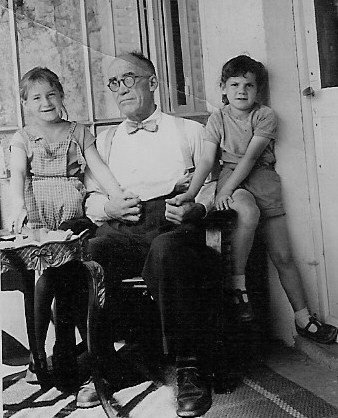
 The Hundred year old Egg | _edited.jpg) The treasures left behind by my great-grandfather #8 |
|---|---|
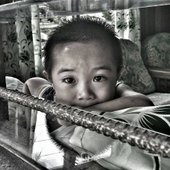 Borneo - portrait photography |  The treasures left behind by my great-grandfather #7 |
“Learning is not a race for information, it is a walk of discovery” - Jane Healy

